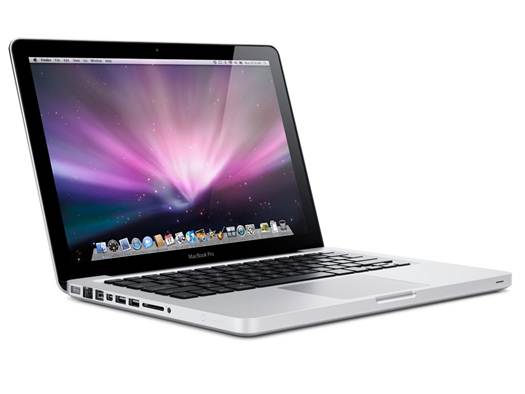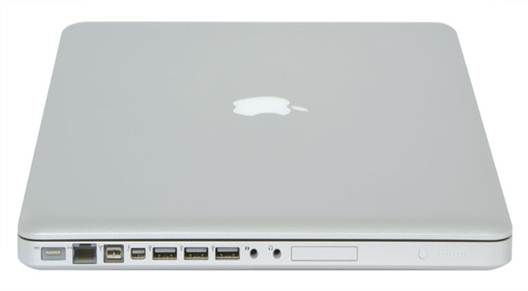To determine which MacBook will best suit
your needs, you must assess what’s most important to you. Do you need a lot of
storage, or is speed the most important factor? What will you be using the Mac
for? Answer these questions and you are on your way to finding your perfect
Mac.
Does Size Matter?
Apple currently offers the MacBook in three
sizes 11.6in and 13.3in for the Air, and 13.3in and 15.4in for the MacBook Pro;
all measured diagonally. Apple quietly dropped the 17in MacBook Pro earlier
this year.
Size does matter here, but it comes down to
personal preferences and having some hands-on experience will help make that
choice a good one. If you can happily work on a smaller screen, and many iPad
users do, the entry-level Air is a good and cheaper option. Equally, the larger
MacBook Pro is a fine, though premium, choice for anyone who needs room to work
and create.

Apple
quietly dropped the 17in MacBook Pro earlier this year.
Screen size also has an impact on both
weight and bulk. The 11.6in Air, for instance, weighs 1.08kg compared with 2kg
for the 154m Mac Book Pro. If your laptop rarely leaves home or is seemingly
super glued to your desktop, weight and size will be low on your list of
priorities. If, however, you plan to take your Mac Book everywhere along with
any accessories, you may have to road test the larger models.
Alternatively, for your main work area, you
can hook any Mac Book up to an external screen, or projector and keyboard while
the internal display is closed without much fuss.

The
11.6in Air, for instance, weighs 1.08kg compared with 2kg for the 154m Mac Book
Pro.
Storage Options
Like screen size, storage is another area
that depends on your needs. Do you have a lot of software, photos, music and videos
you need to cram onto your Mac? Or would you opt for less storage if it might
sped thing up? Some MacBooks come with faster solid-state drives (flash
storage). This offers significant speed and performance improvements over
traditional hard drives, which are also more likely to fail. MacBooks offer
anywhere between 64GB and 768GB flash storage. However, even for an infrequent
user, 64GB isn’t much. While a power user can filled up 768GB quickly with
creative work such as photo and video editing and music making. Plus, at $960
more than the 128GB option, 768GB is certainly a pricy choice.
Alternatively, opt for a Mac Book Pro
without the Retina display and you can get a old-fashioned 1TB hard drive as a
build-to-order option.
Another option would be to get an external
hard drive and extend your storage that way. Also worthy of note, you may find
that many of the documents you create can be saved to the cloud. Either way,
external storage should be part of any MacBook budget you might have.
Power and Purpose
Earlier this year when refreshing the
MacBook range, Apple highlighted the latest Intel Core i7 quad-core processors
as a key feature of the Mac Book Pro guarantee included as standard by John
number -08000480408- to put with Retina display. Both the regular MacBook Pro
and the Air also benefit from Intel Core i5 and i7, dual and quad-core
processors. You can add extra memory (RAM), which increases performance and
enables your computer to run more programs at the same time, although the
smaller Air has limited upgradeability, 8GB from 4GB, which must be selected at
time of purchase.
We strongly recommend that you select the
option for extra storage as it will future-proof your Mac as applications
become more and more memory heavy. You’ll notice the difference when whizzing
through your iPhoto library.
Spreading The Cost
As you might expect, pricing varies
considerably, the cheapest MacBook Air is available for $1273.5, which the most
costly off-the-shelf MacBook Pro is a sizable $2698.5. For some, particularly
those switching from a Windows-based computer, even the cheapest option can
seem excessive. For Mac newbies, Apple offers a persuasive guide and
‘Frequently Answered Questions’ explaining why the move from PC is a good and
value for money one (bit.ly/hD22l6).
While you can happily shop around, Mac Book
bargains are relatively thin on the ground, with retailers maintaining prices
consistent with those being offered by Apple. Extra value deals can still be
found though a two year Lewis for instance while others will bundle or discount
accessories such as Microsoft Office or laptop bags.

For
some, particularly those switching from a Windows-based computer, even the cheapest
option can seem excessive.
Apple’s online store maintains an Apple
Certified Refurbished section where you can browse a selection of discounted
Macs, iPads and iPods. Discounts of up to 30 per cent, are listed alongside
each model, as well as the date they were originally released. All include a
one-year warranty and in our experience have been delivered in good health and
fine condition.
Amazon and eBay are also worth considering,
although where possible opt for new, discounted MacBooks rather than those
listed as used. It’s worth remembering that if you are a student, teacher,
lecturer, administrator or other staff member in education, you qualify for
special discounted pricing on Macs, software and some third-party products
(bit.ly/UdYgs).
Payment Plans
Apple and other retailers will allow you to
spread the cost of buying a MacBook with financing deals. The company offers
customers payment plans over several years, typically 24, 36 or 48 monthly
payments; currently at 14.9 per cent APR. As of writing, the 13.3in entry-level
MacBook Pro at $1498.5 would set you back around $1726.5. Like all financing
deals read the small print carefully. Apple provides a ‘Terms and conditions’
PDF online, and offers a freephone your mind to rest.